The GIGABYTE X170-Extreme ECC Motherboard Review: For When Skylake Xeons need SLI and Thunderbolt 3
by Ian Cutress on October 17, 2016 2:00 PM ESTGIGABYTE X170-Extreme ECC BIOS
A proportion of this page was posted with our GIGABYTE Z170X-Gaming G1 review due to similarities within the same generation of products. Text has been updated to match this specific unit.
The graphical BIOS has been a permanent competitive fixture in the modern motherboard market – the ability to do more with less and provide a seamless experience to both enthusiasts and new users is a point that manufacturers can provide both a selling point and that unique aspect that makes it stand above the crowd. The big four motherboard manufacturers have now all adopted the same philosophy of an easier mode for a front screen that sits above an Advanced mode which is more enthusiast focused.
While GIGABYTE does typically have an easy mode, called the startup guide, with its motherboards, for the Z170-Extreme ECC it was absent and we were left solely with the classic mode. With this mode, previously there is a disjoint when you enter between what you see and what the system thinks is selected – about 50% of the time it will show the first tab, MIT, rather than the one which is actually selected, System Information. This is pretty much fixed now.
The first tab from the left is MIT, the intelligent tweaking menu that provides some information about the system but acts as the main hub for overclocking options. The three main menus here are Frequency, Memory and Voltage, which all do what they say and offer options relating to those features.
The Frequency sub-menu for a C236 motherboard is quite basic, compared to other motherboards that allow overclocking. Here we get more of a say with the IGP of the system, being able to adjust the GPU ratios, however the CPU ratio is fixed at the max for the CPU (40x for the i7-6700K). Nonetheless, users can still adjust the per-core ratios as required, as well as the various package power, platform power and DRAM power limits in the Advanced CPU Options menu.
In our previous reviews, it was noted that a typical enthusiast will want to adjust frequency, power and/or voltage often in the same sitting. With the GIGABYTE BIOS, that requires moving into this frequency menu for the first part, and navigating to different menus for the voltage. It would be ideal if the GIGABYTE BIOS duplicated some of those options, at least the CPU vCore and CPU Load-Line Calibration, to the frequency menu just as the memory multiplier has been duplicated.
The Memory sub-menu doesn’t give an option to enable XMP, as this platform is limited to DDR4-2133. There are options to adjust the sub-timings however, to implement a form of memory enhancement. Any users with sufficient knowledge of memory subtimings and tertiaries are free to have a plunge in these menus.
The Voltage sub-menu actually opens another set of sub-menu options, including power, core voltage and DRAM voltage. We’ve spoken to GIGABYTE about their method of doing it this way in the past, and the answer is to make options easier to find by separating them out – personally some of these options could be joined up and still fit on screen very easily, such as a ‘simple’ and ‘advanced’ voltage sub-menu that provides some options duplicated but the simple set is just the few that most enthusiasts will want to use.
Nevertheless we find the processor load line calibration in the power settings menu, the processor voltage (CPU, GPU, Ring and PLL) in the Core Voltage Control, memory voltage in the DRAM menu and anyone extreme enough to enter the voltage regulation control can go nuts, with plenty of options that few engineers understand.
The MIT tab also offers a PC Health menu which contains all the sensor readings as well as the fan controls.
GIGABYTE is still lacking an interactive fan control option in the BIOS, while the other manufacturers have such a system with several points users can modify with a mouse. Instead from GIGABYTE we have a series of options relating to PWM/°C, which is a confusing metric if you do not understand fans. To explain it, basically the system can apply a value of 0 PWM to 255 PWM to the fan which relates to the fan voltage. This scale is not always linear, and what makes it frustrating is that the fan’s response is also non-linear to the voltage applied. Technically GIGABYTE could detect the fan RPM as a function of PWM and do the mathematics to provide gradients with actual RPM values, but instead we get basic PWM values. Just to put it into context, some fans are at 0 RPM until 40% PWM (40% of 255 is 102), and then shoot to 60% of their peak RPM speed. So at a gradient of 1 PWM value per degree, you would only see the fan turn on at 102 degrees, which by then it’s too late as the machine might have shut down due to overheating. Fan speed control is a very easy concept to fix, but for whatever reason is left like this.
After MIT, the next important tab is the BIOS Features one which allows boot sequence adjustments as well as fast boot, Windows 10 and secure boot options. A newer option here is the Mouse Speed option, designed to assist mouse movement in the BIOS.
The Peripherals tab is where the extra controllers can be adjusted as well as the SATA Controller configuration (AHCI/RAID), NVMe support and Thunderbolt support.
The Chipset tab is for integrated graphics and audio options, as well as virtualization through VT-d (which is disabled by default).
For boot override options, in order to boot from a single device for just one boot, these can be found in the Save and Exit menu.
A full series of images for this can be found in the BIOS gallery.









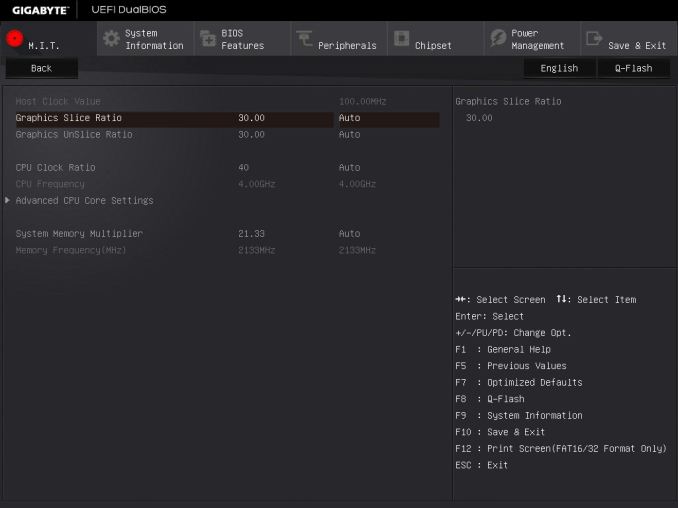

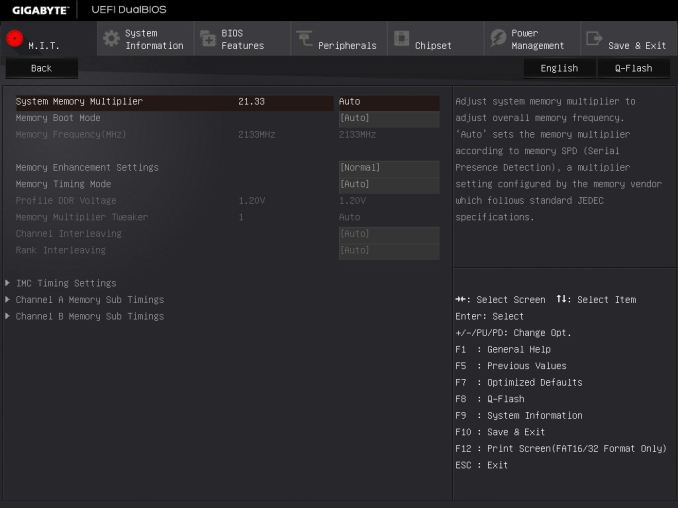


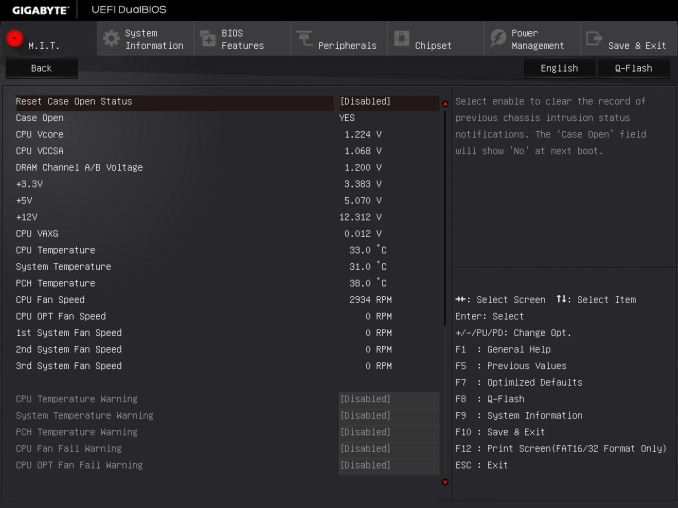
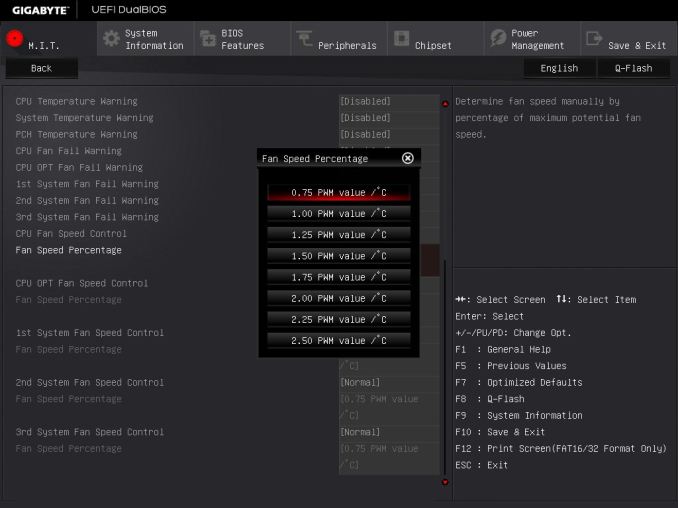
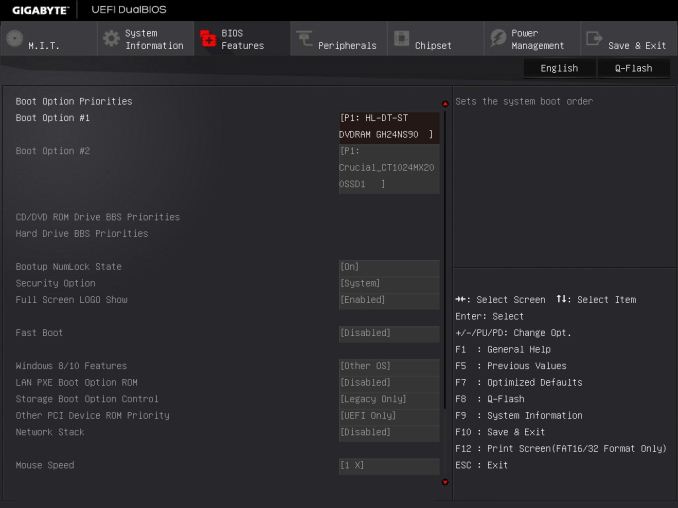

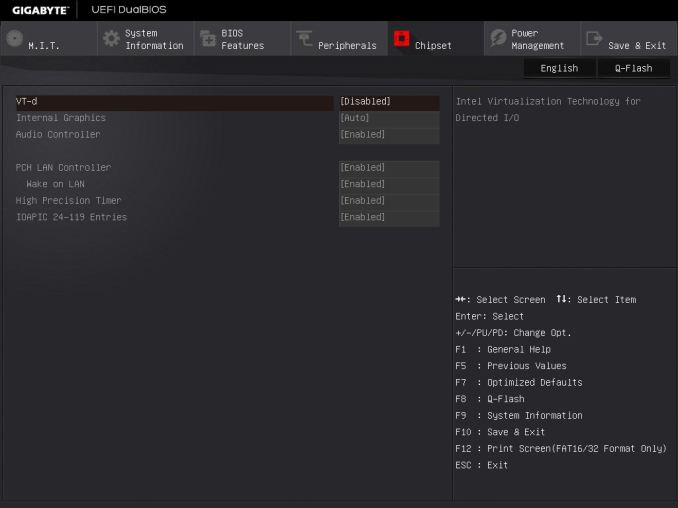









31 Comments
View All Comments
Ej24 - Monday, October 17, 2016 - link
This is LGA1151Ej24 - Monday, October 17, 2016 - link
Typically Xeons are cheaper than their i7 relatives at the same specs. But when the motherboard costs double you effectively negate any savings on the CPU, and don't gain much over the i7's in terms of chipset features. I miss the Haswell days when you could slap an lga1150 Xeon in a Z87/97 for less than an i7 and get all the consumer goodies too.Also, can someone explain why SATA Express is given PCH lanes but the regular SATA3 ports are on a ASMEDIA controller?!?! Why is SATA Express included at all anymore??? Wasn't it DOA? Has anyone ever brought a SATA Express drive to market? Has anyone ever used one? Why not free up those PCIe lanes for something useful like more PCIe expansion slots, or support for more simultaneous M.2 NVME drives?
Dahak - Monday, October 17, 2016 - link
The sata express slots works as either Sata Express (taking up 2 Sata ports per 1 Sata Express connection) or as 6 sata ports. In addition to the 2 from the asmedia controllercbm80 - Monday, October 17, 2016 - link
Either they are targeting a niche demo (professional 10-year olds?) or else Gigabyte's marketing is sending a mixed message.Jacerie - Tuesday, October 18, 2016 - link
"For the money, GIGABYTE offers plausibly the consumer board with the highest specifications cable of supporting E3-1200 v5 Xeons..."Shouldn't that read... highest specifications capapble?
Gigaplex - Tuesday, October 18, 2016 - link
Not unless you want to include typos.sor - Sunday, October 23, 2016 - link
Kind of lame that the article says ECC about 100 times, it's a major selling point of the platform, and I can't seem to find anywhere in the article where they actually benchmark with ECC memory. This is sort of like the time when they reviewed the quad SLI motherboard without actually trying quad SLI on it, although there was a much bigger uproar.Zan Lynx - Saturday, October 29, 2016 - link
The last time I ran some casual tests, ECC RAM of the same speed rating produced the same GB/s as non-ECC. Within the margin of error. The issue might be that you can't really find ECC RAM rated for higher speeds with XMP profiles.sor - Monday, October 31, 2016 - link
Yeah, that's part of the point. It would highlight that you're probably going to get a bit lower performance from this board if you're caring about its primary feature enough to equip the namesake RAM. Instead they stuck to components that make it swappable with a much cheaper board.imisdjsd - Tuesday, November 8, 2016 - link
This sudoddit is one of the main centers of speculation and theorization on Game of Thrones and Song of Ice and Fire, from here came several reputed leaks.) Another Reddit user, who claims to have a close relationship with one of the " / Actresses of the show "<a href="http://gamecheatsforfree.org/slither-io-hack/"... slither.io</a>